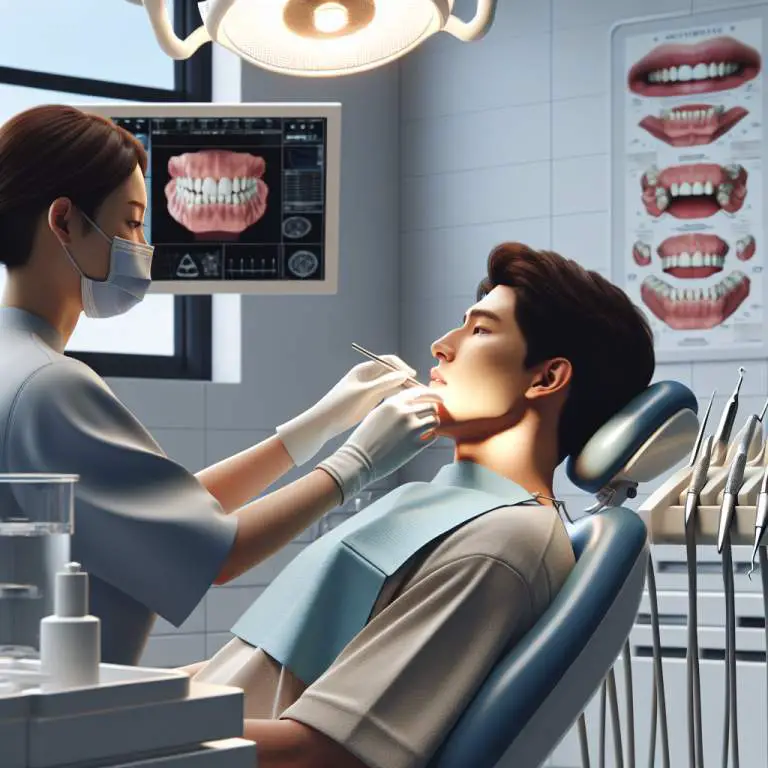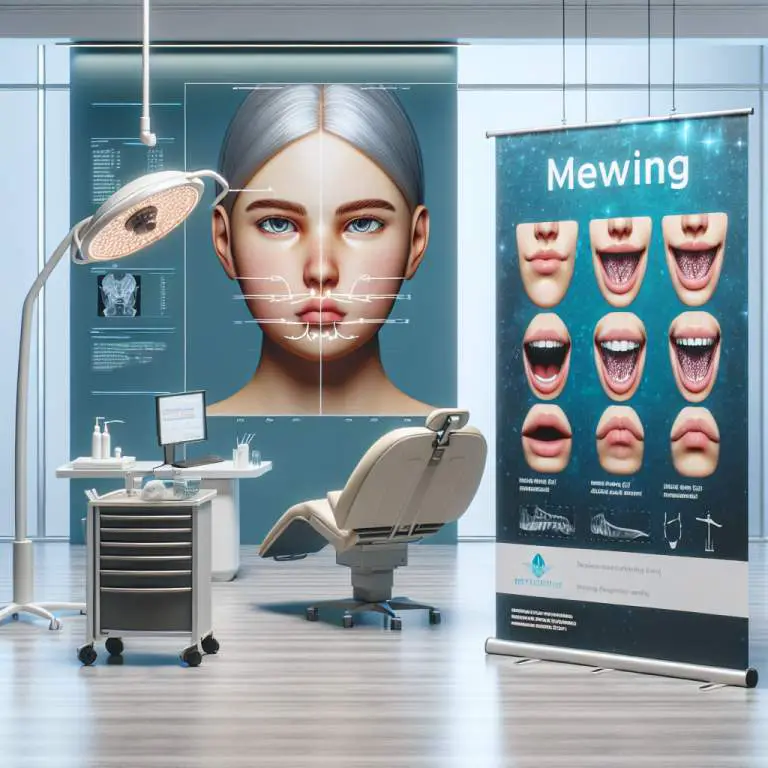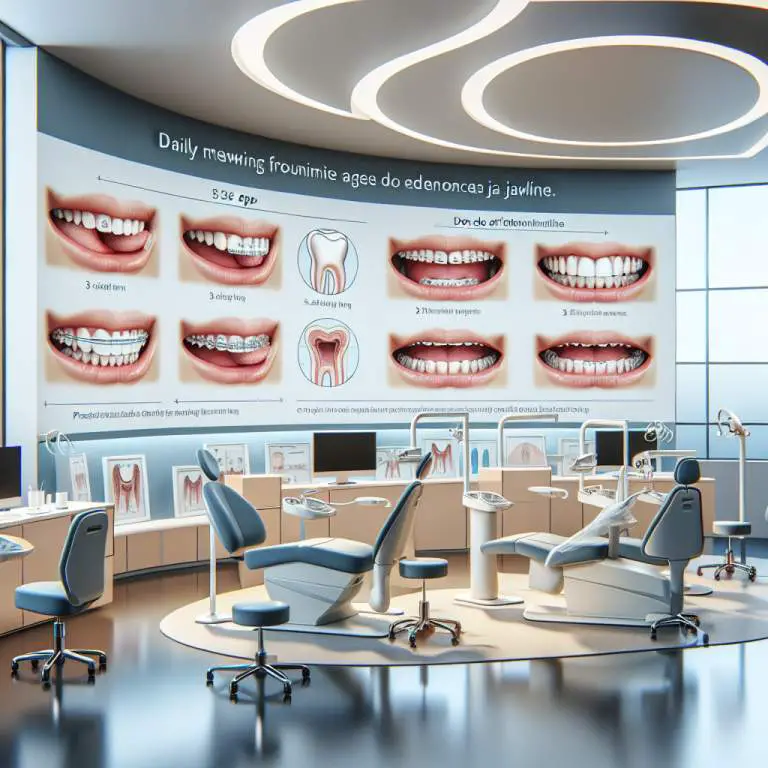How do genetics influence the results of mewing on the jawline?
Genetics play a big role in how mewing affects your jawline. If your family has strong, well-defined jawlines, you might see better results from mewing. However, if your genetics lean towards less pronounced jawlines, improvements from mewing could be more subtle. In short, your genetic background can influence the extent of changes you see from practicing mewing.

How do genetics influence facial structure?
Have you ever wondered why you look a bit like your mom or dad, especially around your face? That’s because of something called genetics. Genetics are like tiny instructions inside every part of your body that decide how you look and grow. They can determine the color of your eyes, the shape of your nose, and even how your jaw looks.
When it comes to your face, genetics play a big role. If both of your parents have strong, square jawlines, there’s a good chance you might have one too. But it’s not just about the jawline; genetics also affect things like the size of your forehead, the shape of your cheeks, and much more. So in many ways, our faces tell stories about where we come from.
What is the principle behind mewing and its impact on the jawline?
Mewing is a technique that some people use to try to change how their jawline looks. It’s named after Dr. John Mew who came up with this idea. The main idea behind mewing is pretty simple: by changing how you position your tongue in your mouth, you might be able to shape how your jaw grows over time.
The way you’re supposed to do mewing is by keeping the entire flat part of your tongue pressed against the roof of your mouth while keeping your lips together but teeth slightly apart. Some people say that doing this can make their jawlines look stronger and more defined. It’s kind of like exercising but for your face!
Can mewing override genetic predispositions to achieve a desired jawline?
A lot of folks wonder if mewing can really change their jawline, especially if they think their genetics didn’t give them the jawline they want. The truth is, it’s a bit complicated. While mewing might help some people improve how their jawline looks by encouraging better posture and muscle use, it’s not likely to completely change what genetics have set up.
Think about it this way: if you were born with a certain type of body shape because of your family genes, exercises could make changes up to a point but won’t turn you into someone else entirely. Similarly, while practicing good habits like mewing might enhance features or promote symmetry, expecting it to totally override genetic factors may lead to disappointment.
What are the limitations of mewing in altering bone structure after a certain age?
One important thing to remember about mewing is that it has its limits, especially when we talk about changing bone structure in adults. Our bones grow and change most when we’re kids and teenagers because that’s when they’re still developing. Once we hit adulthood—usually around our early twenties—our bones stop growing so much and start setting into place.
This means that if an adult starts practicing mewing hoping for big changes in their bone structure or facial profile, they might find that it doesn’t work as well as they hoped. While improving tongue posture can have benefits like better breathing or reduced tension in the face muscles, dramatically altering an adult’s bone structure through mewing alone is quite unlikely.
| Factor | Role in Jawline Improvement through Mewing |
|---|---|
| Genetic Jaw Structure | Determines the baseline shape and size of the jaw, influencing how much mewing can potentially reshape or define it. |
| Genetic Tissue Elasticity | Influences how responsive the skin and muscle around the jaw are to reshaping efforts like mewing. |
| Bone Density | Affects how easily the bones can be remodeled with pressure over time, including practices like mewing. |
| Age | Younger individuals may see more significant results due to the natural flexibility and adaptability of their bones and tissues, which is partially determined by genetics. |
| Growth Hormones Levels | Can influence bone growth and remodeling capacity. Higher levels might enhance the effects of mewing on jawline improvement. |
How long does it take to see results from mewing, considering genetic factors?
Seeing results from mewing can vary greatly from person to person. This is because everyone’s genetics are different. Some people might start to notice changes in a few months, while others may need a year or more. It all depends on how your body responds.
Genetics play a big role in this process. If your family has strong jawlines, you might see results faster. But remember, patience is key. Mewing is about making small changes over time.
Are there any scientific studies supporting the effectiveness of mewing on changing the jawline?
As of now, there are limited scientific studies directly linking mewing to significant changes in the jawline. Most evidence comes from personal testimonials and before-and-after photos shared online. This makes it hard to say for sure how effective it is.
However, some related research shows that tongue posture can impact facial structure over time. These studies suggest that practices similar to mewing could have an effect, but more research is needed to confirm its effectiveness specifically.
What additional methods can complement mewing for better results?
To get better results with mewing, combining it with other habits can be helpful. For example, maintaining good overall posture and staying hydrated are important. These habits support the changes you’re trying to make with mewing.
Exercises that target the neck and jawline can also be beneficial. They strengthen the muscles around your jaw, helping enhance the effects of mewing. Remember, a holistic approach often works best.
Final Thoughts
Mewing has gained popularity as a technique for improving jawline definition, but it’s not a quick fix. Results take time and depend on various factors including genetics and consistency in practice.
If you’re considering trying mewing, keep in mind that patience and persistence are crucial. Combining mewing with other healthy habits can also help achieve better outcomes. As always, consult with a professional if you have concerns about your facial structure or health practices.






